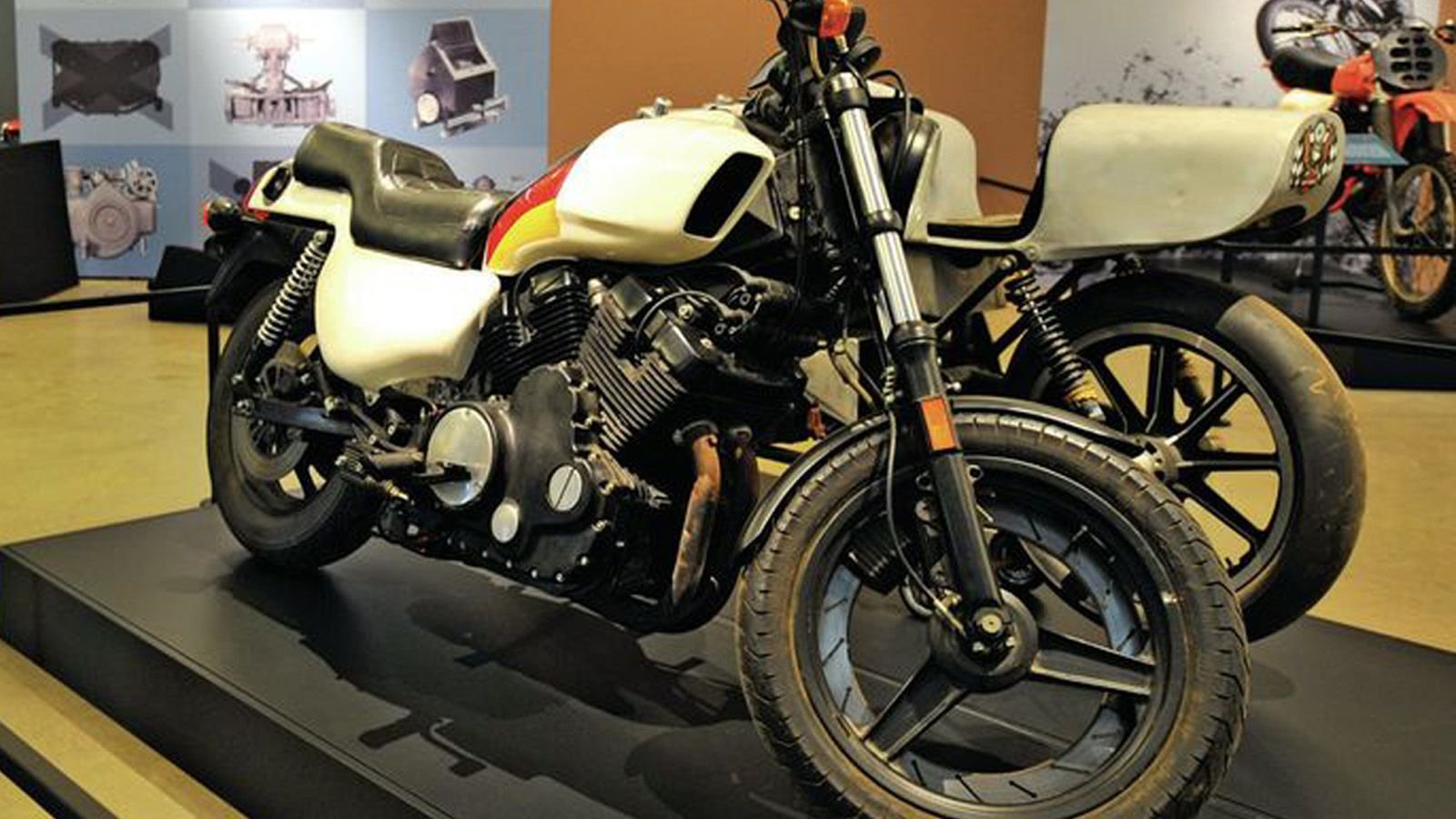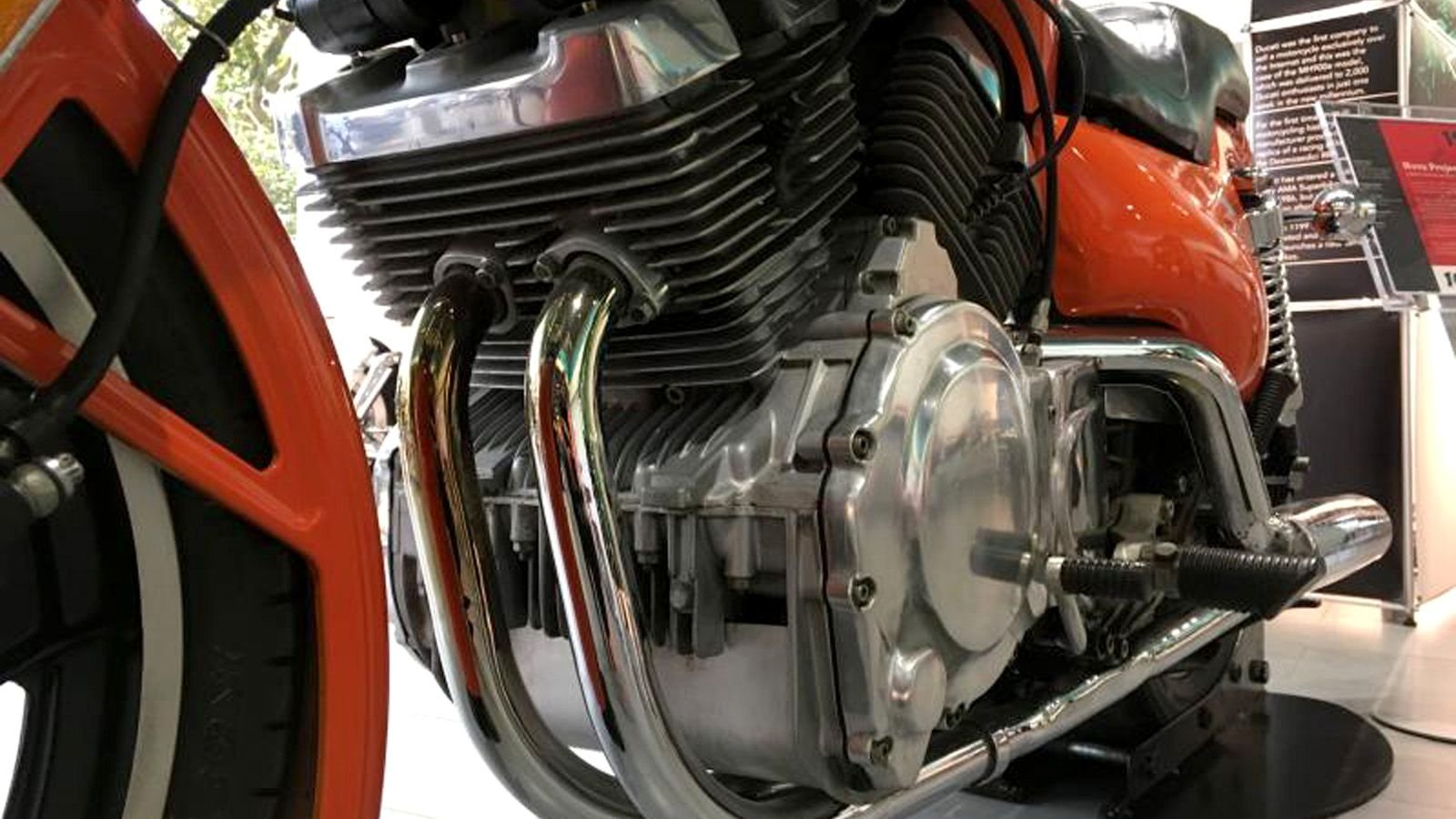The Harley-Davidson V-4 Nova Project was a Costly Dead End
Daily Slideshow: A liquid-cooled V-4 might have been the future for the Motor Company.




















Another Dimension
Like something out of a Twilight Zone episode, the Harley-Davidson Nova Project is a reality that almost materialized. In 1976, at the height of the AMF years, the Nova Project was hatched during the week-long 'Pinehurst Meeting' at a resort hotel in North Carolina. Five years later in 1981, the Nova Project was ready for production.
Divided Direction
The upper-management Pinehurst retreat was a pivotal moment in Harley-Davidson's history. What emerged was a two-point plan. Guided by then vice-president Vaughn Beals, the consensus was to split forces and push forward with the development of the Evolution motor, while also working on a new, and technologically advanced machine intended to lure riders away from other brands.
>>Join the conversation about the V-4 Nova Project right here in HDForums.com.
Ready to Roll
Unfortunately, the Nova Project was canceled in 1981. Far from a backroom experiment, the Nova Project had cost the Motor Company over ten million dollars in research and development. At the closing of the program around two-dozen prototypes were constructed, tested, and received street legal certification. The casting dies for the Nova engine and transmission, which had been developed in collaboration with Porsche, were complete. All that remained was the tooling required for production.
>>Join the conversation about the V-4 Nova Project right here in HDForums.com.
Potential Competition
The Nova Project was dropped not because it was a bad design but for financial reasons. In fact, it was a powerful and reliable platform that produced a mighty 135 horsepower from its 60-degree, 1000cc engine. The Nova Project's only competitor would have been the 1982 Honda Sabre V45. Hailed as innovative, the Sabre utilized the same V-4 layout, but was plagued by camshaft failure, and produced one-third less horsepower than the Nova Project.
>>Join the conversation about the V-4 Nova Project right here in HDForums.com.
Not a Looker
The Nova Project was a radical design departure for Harley-Davidson. While some might appreciate the Nova Project's aesthetics, most would probably agree that it is downright hideous. However, the Nova Project was never intended to look like a traditional V-Twin. Its target market was riders accustomed to the function-over-form design prevalent in European and Asian machines at the time.
>>Join the conversation about the V-4 Nova Project right here in HDForums.com.
Styling Constraints
The Nova Project's biggest visual challenge came from the requirement for a large radiator. Willie G. Davidson, who oversaw styling, refused to allow an exposed radiator to be stuck on the front. The solution was two large air scoops on either side of the 'fuel tank' that directed air to a horizontal radiator. This meant that the actual gas tank, resembling a bulging guppy, was relocated under the seat.
>>Join the conversation about the V-4 Nova Project right here in HDForums.com.
Harley Genes
The air scoop and relocated fuel tank were ingenious solutions to the engineering problems that the design created. Even though the Nova Project was far out on the Harley-Davidson family tree, some of its genes have floated down. Keen observers will note the design of the air scoop and the similarity to that of the 2019 FXDR. In a bit of a bizarre legacy, the Nova Project's design was almost completely mirrored in the formidable 1985 Yamaha V-Max.
>>Join the conversation about the V-4 Nova Project right here in HDForums.com.
Pay It Forward
The time and money invested in the Nova Project was not a complete write-off. After extensive wind tunnel testing, the fairing and distinct trapezoid side bags found their way to the 1983 FXRT Sport Glide. The V-4 engine development and partnership with Porsche paved the way for the VRSCA Revolution V-Rod engine, and engineering aspects of the fuel injection were leveraged into the Twin Cam to meet emission standards.
>>Join the conversation about the V-4 Nova Project right here in HDForums.com.
Evolution Direction
The Nova Project and the V-4 engine were innovative concepts that were echoed by other manufacturers. Had financial circumstances been different and corporate direction not changed, the Nova Project might have seen production. The other sobering thought is that, given different circumstances, the Evolution motor could have been the one dropped.
>>Join the conversation about the V-4 Nova Project right here in HDForums.com.
Display Zone
In 1981, former vice-president, and new CEO, Vaughn Beals led the so-called “gang of thirteen” investors to buy Harley-Davidson back from the AMF. For the cash-strapped Motor Company, the Nova Project was a long-range hope. The choice was obvious, and the Nova Project entered the museum. Perhaps more importantly, generations of new Harley-Davidson riders were spared entry to the Twilight Zone of the Nova Project.
>>Join the conversation about the V-4 Nova Project right here in HDForums.com.
For help with your maintenance and repair projects, please visit our How-to section in the forum.

